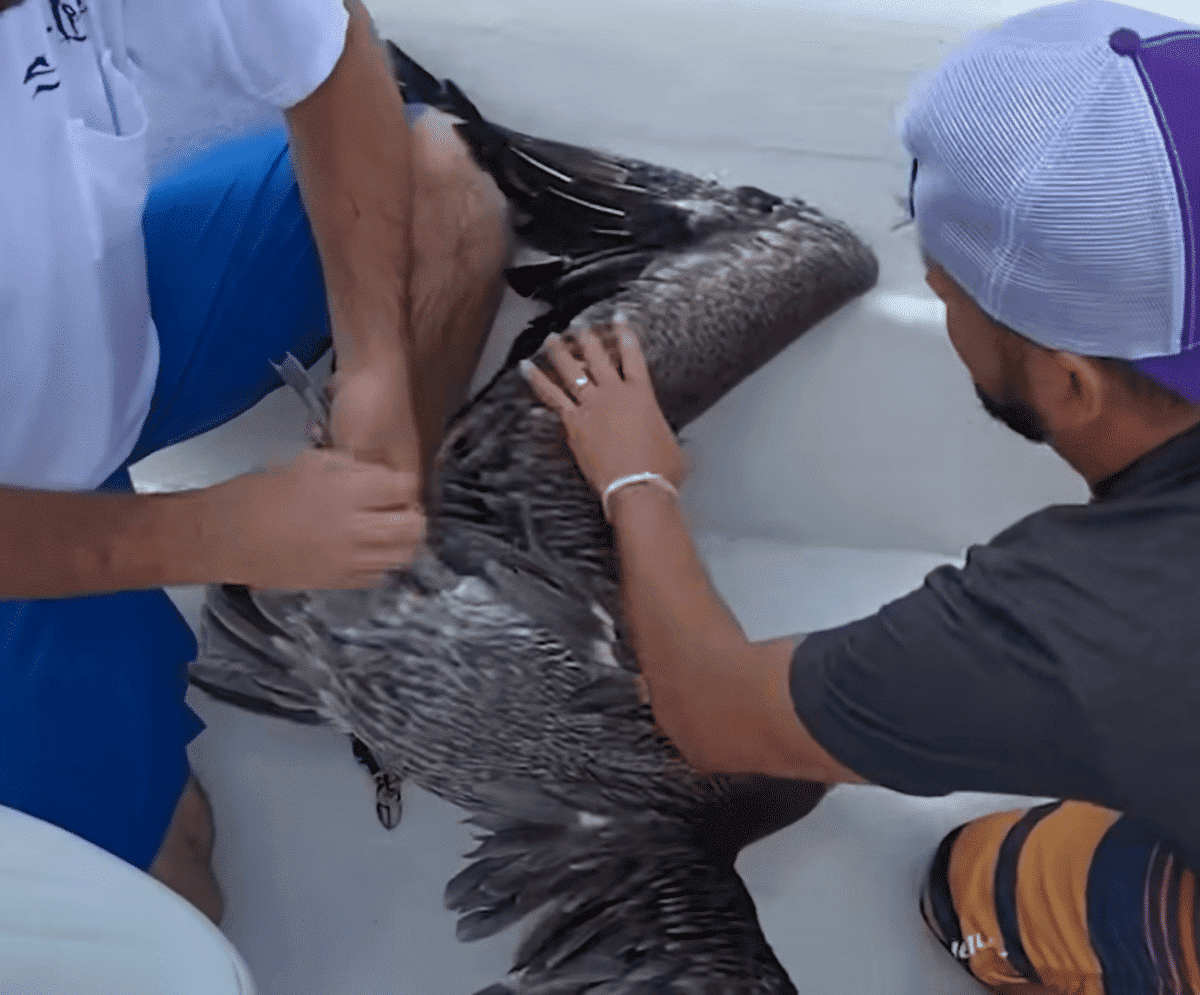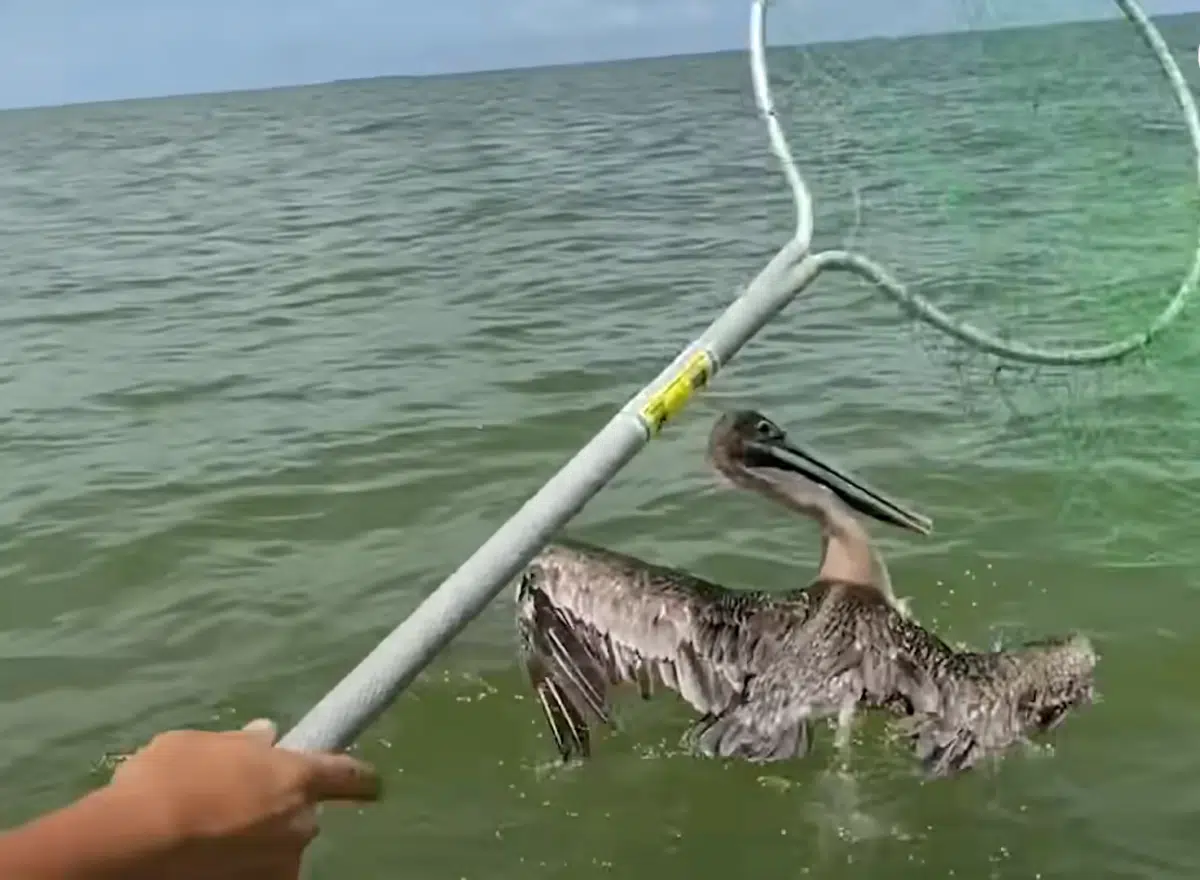A video captures a group of fishermen who encountered a struggling pelican in the middle of the ocean, entangled in a fishing line and unable to fly. The fishermen use a net to carefully bring the distressed bird onto their boat. Three men then hold down the pelican, working diligently to remove the entangling fishing line. Their efforts are successful, and the bird is released back into the wild, where it flies off beautifully, a symbol of freedom and the importance of wildlife rescue.

Understanding Brown Pelicans
The Brown Pelican, scientifically known as Pelecanus occidentalis, is a member of the pelican family found in the Americas. These birds are known for their distinct feeding behavior, where they plunge-dive from heights to catch small fish. Brown Pelicans are found along the Atlantic Coast from New Jersey to the Amazon River, and along the Pacific Coast from British Columbia to Peru, including the Galapagos Islands. They are the smallest of the pelican species but are still large seabirds with a wingspan of up to 7.5 feet.
Brown Pelicans primarily feed on fish and nest in colonies, often on isolated islands. Both males and females share incubation duties, with the chicks hatching in about a month. The species has made a remarkable recovery from the brink of extinction due to pesticide pollution and is now a common sight along southern and western coasts.
The Impact of Fishing Lines on Birds
Discarded fishing lines pose a significant threat to birds and other wildlife. It can cause a range of problems, including entanglement, movement restriction, starvation, and even drowning. Birds, in particular, can suffer severe injuries from entanglement, leading to amputation of limbs or death. Fishing lines, being durable and non-degradable, remain a hazard for extended periods, making it crucial to manage and dispose of them responsibly.
Managing Fishing Line Waste
Proper disposal and management of fishing lines are vital to protect coastal wildlife. Anglers are encouraged to recycle fishing lines and cut them into small pieces before discarding them to prevent wildlife entanglement. Volunteering for beach cleanups and supporting the use of biodegradable fishing lines are other ways to mitigate the impact of fishing line waste. It’s essential for everyone, not just fishermen, to be aware of the dangers of fishing lines and take steps to prevent harm to wildlife.
You might also enjoy:
Watch: The Fascinating Courtship of Ruffs
The Surprising Link Between Acorn Worms and Climate Stability
The Small Sharks of South Africa’s Underwater Kelp Forests
Join our Forum for free today!

- The Bond Between a Wild Baby Bison and Her Rescuer - July 20, 2024
- An Excited Husky’s First Ever Time in Snow - July 20, 2024
- Top 20 Colorful Species To Brighten Your Day - July 14, 2024


